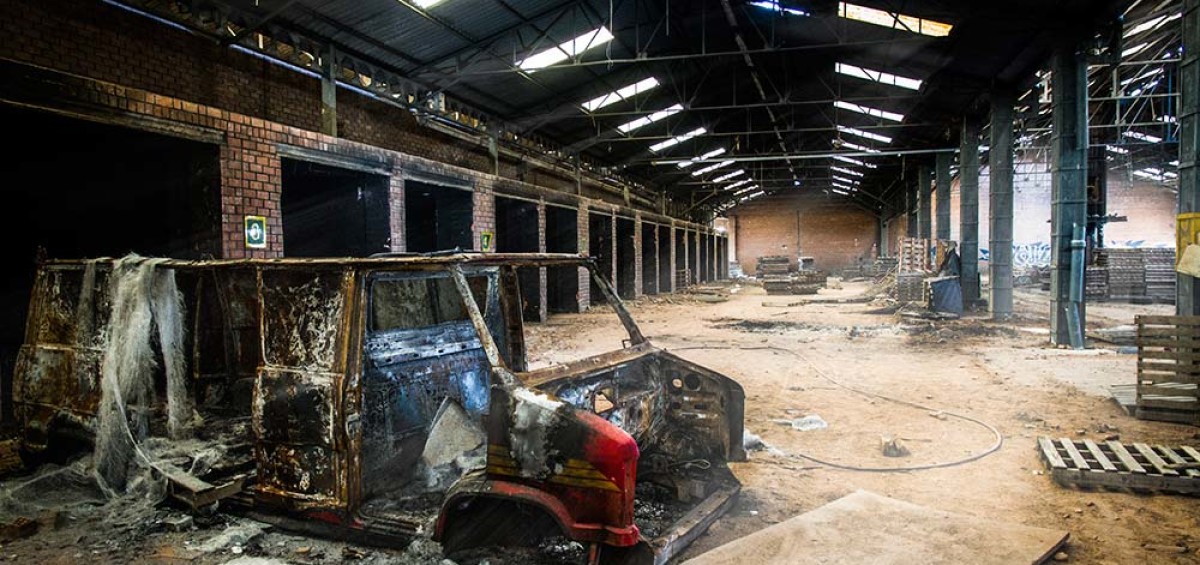Keep your warehouse safe with these simple tips
Warehouses are vital repositories for a business’ stock. They store most, if not all, of a business’ goods ready for sale or distribution.
Because they have such an important function—safeguarding the biggest source of a business’ income—warehouses can control a business’ fate. Any warehouse disaster, such as a fire, can have disastrous consequences, potentially shutting down the warehouse and forcing the entire business to cease operations.
Neglecting to shield your warehouse against fires means you could be sealing your business’ fate. As an owner, manager or warehouse operator, do not let all your hard work go up in smoke—adopt these simple measures to stamp out fires in your warehouse.
Fire Safety Legislation
The starting point for any successful workplace fire safety program is undertaking a risk assessment according to the fire safety legislation relevant for your area. Most risk assessments follow these five steps:
- Identify the fire hazards.
- Determine the people at risk.
- Evaluate, remove or reduce the risks.
- Record your findings, prepare an emergency plan and provide training.
- Review and update the fire risk assessment regularly.
Fire Safety Procedures
Using the information gleaned from your risk assessment, establish fire safety procedures that are tailored to your business’ fire risks. Train all employees in these procedures to ensure a unified response in the event of a fire. Institute an employee self-inspection program to maintain housekeeping standards and fire protection measures.
Fire Protection Tools
Assemble all the tools at your disposal to help fight warehouse fires. These include fire extinguishers, sprinklers and automatic fire detection systems. The number and type of fire extinguishers you require depends on the nature of your business. For Class A fire risks—fires involving solid materials such as wood, paper or textiles—the National Fire Protection Association recommends having one 2-A extinguisher for every 3,000 square feet. OSHA requires that all employees have access to an extinguisher within 75 feet of travel distance.
Locations that contain Class B flammables, such as workshops, storage areas, research operations, garages, warehouses or service and manufacturing areas, require that all employees have access to an extinguisher within 50 feet of travel distance.
But the tools you need for your warehouse depend on your business’ specific fire risks. Adopting a one-size-fits-all fire prevention program is inefficient and dangerous. Be sure to tailor your fire protection tools to the distinct fire risks you face.
Storage Arrangements
Failing to arrange clearly defined, adequate storage can intensify your fire risks for several reasons. Crowded aisles may block fire exits and make it harder for people to escape, cramped warehouses spread fire more easily, and storing hazardous materials such as flammable liquids with other warehouse stock greatly boosts the chances of a fire.
Arranging clearly defined, adequate storage is mostly common sense—keep electrical switchgear and heating equipment clear of storage, never let goods get within 18 inches of lighting, allow enough clearance between sprinkler heads and stored goods to make sure your sprinkler system can effectively douse the area, and segregate the hazardous and non-hazardous materials. Smart storage can greatly lower your fire risk.
Electrical Systems
Faulty electrical systems are hidden dangers. Make sure your warehouse’s electrical systems are correctly installed and maintained according to the relevant standards. Schedule a competent electrical contractor to inspect and test your electrical systems periodically so any defects can be fixed promptly. The longer you wait with faulty electrics, the bigger your fire risk grows.
Security Protection
Arson is one of the main causes of warehouse fires. Shield your business against this pervasive risk by installing internal and external security measures, such as security cameras and alarms, to deter trespassers and fortify your warehouse.
Smoking
To comply with smoke-free legislation, you must prohibit smoking throughout your premises. You could provide an external smoking shelter, neither completely nor substantially enclosed. Construct smoking shelters using only non-flammable materials. No flammable materials should be allowed within 20 feet of the shelter.
Space Heating
Warehouses, with their wide, open spaces, can be very cold and difficult to heat—and heating such spaces can be extremely expensive. For this reason, the temptation to rely on portable heating can be strong. Resist the urge, as portable heating carries a much higher fire risk than fixed heating systems. Your energy bills from a fixed heating system will pale in comparison to the amount you spend recovering from a warehouse fire caused by portable heating.
Waste Removal
Accumulating waste in your warehouse is a major fire risk. Employees should remove all waste materials at the end of every working day and transfer them to external receptacles located at least 30 feet from any buildings and at least 6 feet from your site’s boundary.
If your site does not permit this type of storage, secure your waste in lockable metal containers located at a practical distance from your building.
End-of-day Inspection
At the end of each working day, a responsible and trained employee should inspect every area of the warehouse and log the results. The inspector should be checking that accumulated waste materials were removed, that fire prevention and security systems are functioning and that any hazardous material or equipment has been isolated as required.
Tailored Insurance Is Best
This list should serve as the foundation to a solid warehouse fire prevention program. There are dozens of additional measures you can adopt, but the most appropriate fire prevention measures will depend on your warehouse’s unique risks. Trust the insurance professionals at Maconachy Stradley Insurance to provide all the resources and industry expertise needed to keep your warehouse protected against fire risks.



